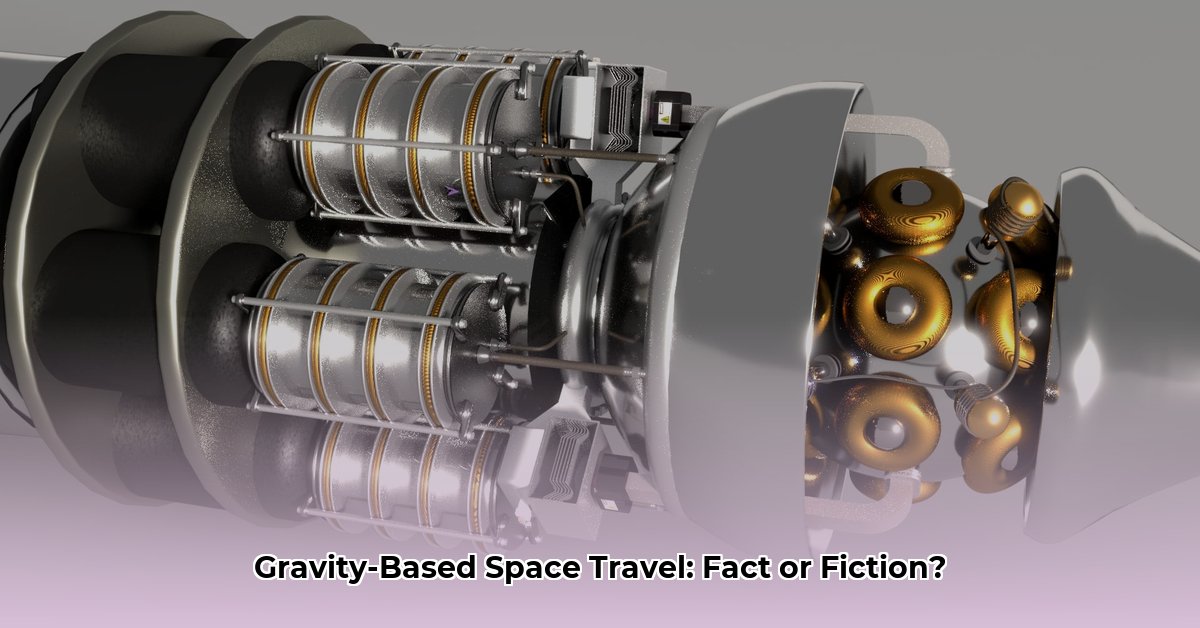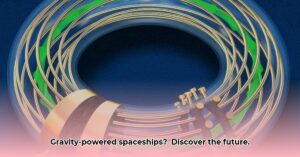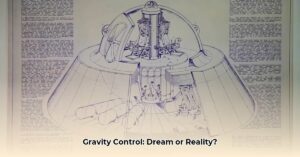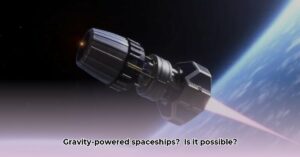The dream of effortlessly soaring through the cosmos, unbound by the constraints of conventional rockets, has captivated humanity for generations. This dream finds its embodiment in the concept of gravitic propulsion – the tantalizing possibility of harnessing the very force of gravity to power our spacecraft. Is this a mere fantasy relegated to the realm of science fiction, or could it one day become a reality? This article delves into the science, the challenges, and the potential of gravitic propulsion, exploring whether this seemingly magical technology could truly revolutionize space travel.
Understanding the Fundamentals of Gravitic Propulsion
What exactly is gravitic propulsion? At its core, it involves manipulating gravity or gravity-like fields to induce motion. Instead of expelling propellant like traditional rockets, a gravitic propulsion system would theoretically interact with the fabric of spacetime itself, creating a “downhill” slope in the universe for a spacecraft to glide along.
How Does it Differ from Conventional Propulsion?
Today’s rockets rely on Newton’s Third Law: for every action, there’s an equal and opposite reaction. They expel hot gas downward to propel the spacecraft upward. Gravitic propulsion, in contrast, envisions a propellantless system. It’s not about pushing against anything; it’s about manipulating the curvature of spacetime to generate motion. This could theoretically enable significantly faster speeds, perhaps even exceeding the speed of light, although that remains highly speculative.
Exploring the Theoretical Basis
Einstein’s theory of General Relativity provides the foundation for understanding gravitic propulsion. This theory describes gravity not as a force, but as the curvature of spacetime caused by mass and energy. The key question becomes: can we artificially manipulate this curvature to create motion? Some theoretical avenues propose using “exotic matter,” a hypothetical material with negative mass-energy density, to achieve this warping effect. Others explore potential links between gravity and electromagnetism, suggesting these forces might be interconnected in ways we haven’t yet discovered.
The Current State of Gravitic Propulsion Research
While the concept of gravitic propulsion has been around for decades, practical research remains in its nascent stages. There are currently no publicly known, large-scale research programs dedicated to developing a working gravitic drive.
Past Explorations: Electrogravitics
In the mid-20th century, “electrogravitics” – the study of the relationship between gravity and electromagnetism – garnered some attention. This field suggested that strong electric fields might generate gravitational effects. However, experiments yielded inconclusive results and were largely dismissed by the mainstream scientific community.
Present Focus: Theoretical Exploration
Today, research in gravitic propulsion is primarily theoretical, confined largely to advanced physics. Scientists are grappling with the fundamental challenges of warping spacetime and searching for any plausible mechanisms to control gravity.
Challenges and Future Potential
The obstacles to realizing gravitic propulsion are substantial:
- Exotic Matter: The existence of exotic matter, crucial for some theoretical warp drive concepts, remains unconfirmed. Creating and manipulating it, even if it does exist, presents a seemingly insurmountable technological hurdle.
- Energy Requirements: Warping spacetime would demand astronomical amounts of energy, far exceeding our current capabilities.
- Control Systems: Designing the sophisticated control systems needed to navigate a spacecraft using a gravity-based drive presents another significant challenge.
Despite these daunting challenges, the potential of gravitic propulsion remains a powerful motivator. Imagine:
- Interstellar Travel: Journeys to distant stars within a human lifetime, opening up the cosmos to exploration and potential colonization.
- Fuel-Less Spacecraft: Eliminating the need for propellant would revolutionize space travel, making it vastly more efficient and cost-effective.
- Planetary Gravity Modification: Potentially altering gravity on other planets to create more Earth-like conditions or constructing large structures in low-gravity environments.
Ethical Considerations: A Gravity-Powered Future
The hypothetical realization of gravitic propulsion raises profound ethical questions:
- Accessibility: Would this technology be accessible to all, or would it become a privilege for the few, exacerbating existing inequalities?
- Weaponization: The possibility of weaponizing gravity control is a chilling prospect, demanding careful consideration and safeguards.
- Unforeseen Consequences: Tampering with a fundamental force like gravity could have unintended and potentially catastrophic consequences. We must proceed with caution and explore the potential risks thoroughly.
Gravitic Propulsion vs. Other Advanced Propulsion Concepts
How does gravitic propulsion compare to other futuristic propulsion ideas?
| Propulsion Type | How It Works | Feasibility | Potential |
|---|---|---|---|
| Gravitic | Manipulates gravity | Highly theoretical | Revolutionary |
| Nuclear Fusion | Energy from fusing atomic nuclei | Under development, promising | Transformative |
| Antimatter | Energy from matter-antimatter annihilation | Early research, significant hurdles | Game-changing |
| Ion Propulsion | Thrust from electrically charged particles | Currently used, limited thrust | Evolutionary |
| Solar Sails | Momentum from sunlight | Currently used, limited scope | Niche |
While other advanced propulsion concepts hold promise, gravitic propulsion remains the most theoretical yet potentially the most revolutionary.
Conclusion: A Dream Worth Pursuing
Gravitic propulsion, while firmly in the realm of science fiction for now, represents a paradigm shift in how we think about space travel. It embodies humanity’s relentless curiosity and the desire to push the boundaries of the possible. While practical gravitic propulsion may remain elusive for generations to come, the research it inspires continues to expand our understanding of the universe and drive innovation in other areas of space exploration. The journey towards gravity control is long and uncertain, but the potential rewards are immense, making it a dream worth pursuing.







